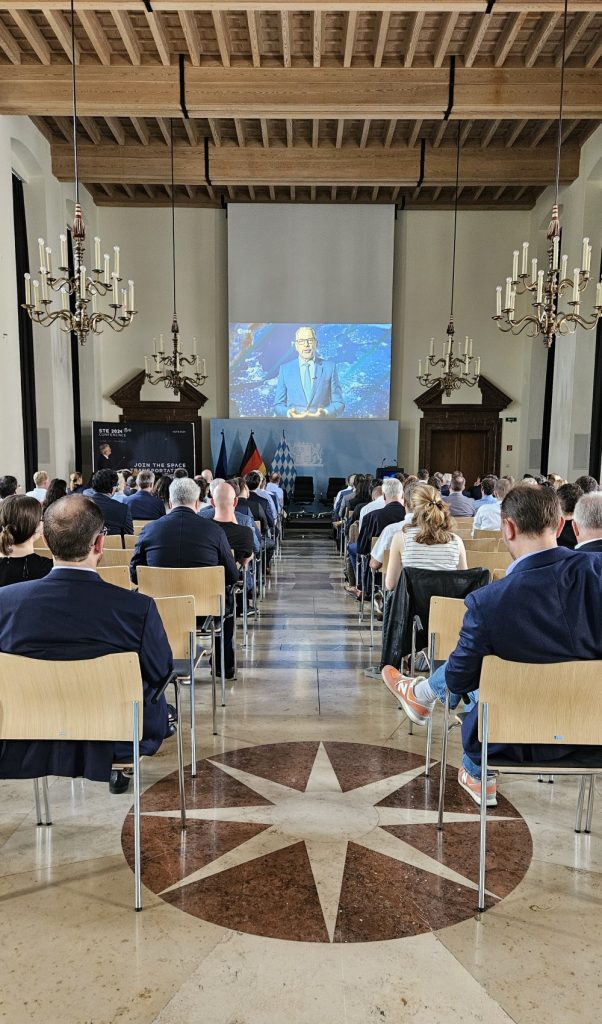#20yearsESABIC

The Residence in central Munich is the former royal palace of the Wittelsbach monarchs of Bavaria. The Residenz is the largest city palace in Germany and is today open to visitors for its architecture, room decorations, and displays from the former royal collections.
The complex of buildings contains ten courtyards and displays 130 rooms. The three main parts are the Königsbau, the Alte Residenz (Old Residenz) and the Festsaalbau. A wing of the Festsaalbau contains the Cuvilliés Theatre since the reconstruction of the Residenz after World War II. It also houses the Herkulessaal (Hercules Hall), the primary concert venue for the Bavarian Radio Symphony Orchestra. The Byzantine Court Church of All Saints (Allerheiligen-Hofkirche) at the east side is facing the Marstall, the building for the former Court Riding School and the royal stables.
Source: Wikipedia
The Max-Joseph-Saal, nestled within the magnificent Munich Residenz, is one of the city’s most elegant venues. Renowned for its exquisite design and exceptional acoustics, it serves as a cherished setting for concerts, readings, formal receptions, and cultural highlights.
Named after King Max I Joseph, a great patron of the arts and culture who shaped Bavaria’s identity, the hall’s refined interior features stucco work, frescoes, and classical decorative elements, reflecting an era of artistic and architectural excellence.
Located in the heart of the Residenz, the hall is not only ideal for events but also attracts visitors eager to explore the beauty and historical richness of the Munich Residenz. Whether as a venue for private celebrations, artistic performances, or exclusive conferences, the Max-Joseph-Saal impresses with its versatility and charm.
Discover this unique space where history and culture come together in perfect harmony.
Created with ChatGPT
The impressive building of today’s Bavarian State Ministry of Economic Affairs, Regional Development and Energy was built between 1936 and 1938. Until the end of the war in 1945, it was used by various command centres of the former air force.
The three-storey building extends over a length of 250 metres from Wagmüllerstraße to Oettingenstraße. It is closed off to the east by a five-storey building and to the west by a four-storey front building.
From May 1945, the ‘Ministry of Economic Affairs’ was housed in the building. Due to the merger with the Ministry of Transport on 1 October 1952, it was renamed the ‘Bavarian State Ministry of Economic Affairs and Transport’. Due to new political priorities in 1994 and 2003, the name was expanded to include the responsibilities for ‘Technology’ and ‘Infrastructure’. From 14 October 2003, the Ministry was known as the ‘Bavarian State Ministry of Economic Affairs, Infrastructure, Transport and Technology’. Following a reorganisation of the divisions, it initially became the ‘Bavarian State Ministry of Economic Affairs and Media, Energy and Technology’ on 10 October 2013 and then the ‘Bavarian State Ministry of Economic Affairs, Energy and Technology’ on 21 March 2018. Since 12 November 2018, it has had its current name: ‘Bavarian State Ministry of Economic Affairs, Regional Development and Energy’.
Ludwig Erhard also epitomised the upturn in the Bavarian economy since the 1950s. He laid the regulatory foundations for the German economic miracle of the post-war period, was responsible for the currency reform and ended the forced economy. Erhard kept the promise of economic advancement, he stood for social equalisation and political stability. He was the Minister of Economics for all, not a representative of the interests of the few. Developments have proved him right to this day.
Ludwig Erhard’s career began in the Bavarian Ministry of Economic Affairs. This is why Ludwig Erhard’s importance is clearly recognised not only in various publications, speeches and publicity, but also in the building of the Bavarian Ministry of Economic Affairs: On 5 May 2007, the ballroom, which was renovated in 1983, was renamed the Ludwig Erhard Ballroom. The memorial plaque was unveiled in the presence of the then Minister of Economic Affairs, Erwin Huber, and the former Federal Minister of Finance, Dr Theo Waigel.
Source: stmwi.bayern.de
